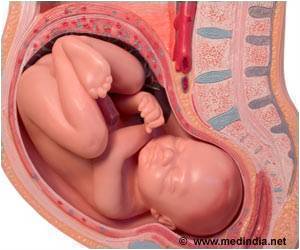
“The placenta is only a temporary organ that aids in the exchange of nutrients and waste between mother and child during pregnancy, but how the placenta responds to toxicants like BPA during pregnancy can lead to long-term health consequences,” Rosenfeld said. “We focused on the role of microRNAs within the placenta, which are known to be key mediators in regulating cellular functions, including neural development, and the identification of certain markers for cancer.”
“These microRNAs can be packaged inside extracellular vesicles and can be transported to distant organs within the body,” Rosenfeld said. “We’re assuming that by changing the pattern of microRNAs in the placenta, these small molecules can then reach the brain, resulting in harmful effects. Even before the brain’s neurons are developed, these microRNA packages may already be guiding fetal brain development. These changes may even be different in female versus male fetuses.”
BPA is used in many household items such as plastic water bottles and food containers, and the epoxy coating of metal food cans. Exposure can occur during the simple act of microwaving food inside polycarbonate plastic food containers. While recent efforts have begun toward making products “BPA free,” the more than decade-long debate surrounding what’s considered safe levels of BPA exposure continues. Numerous studies have looked into possible related health consequences, including neurobehavioral disorders, diabetes, obesity and various reproductive deficiencies.
Rosenfeld believes microRNAs’ changes in the placenta could also be used as an early diagnostic biomarker for BPA exposure.
“By identifying the relationship between these microRNAs and fetal brain development through BPA exposure, targeted therapies could eventually be developed to help prevent or reverse some of the harmful effects of BPA exposure that occur due to these microRNAs,” Rosenfeld said.
READ RELATED: Uncorking the truth about moderate drinking… as virus crisis sees many of us reaching for the bottle
Future plans for this work include examining the relationship between the placenta and the brain outside of the body through using cell culture systems.
This latest discovery continues a more than decade-long interest by Rosenfeld on the effects of BPA exposure. Her most recent focus on the relationship between the placenta and the brain could help scientists with developing a foundation for an early step in translational medicine, or research that aims to improve human health by determining the relevance of animal science discoveries to people. “MiRNA changes in the mouse placenta due to bisphenol A exposure,” was published in Epigenomics. Co-authors include Jiude Mao, Jessica Kinkade and Nathan Bivens at MU. Funding was provided by a grant from the National Institute of Environmental Health Sciences (1R01ES025547). The content is solely the responsibility of the authors and does not necessarily represent the official views of the funding agency.
Source: Eurekalert
Source:






